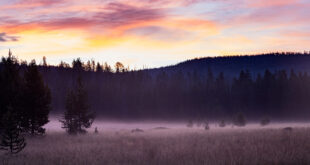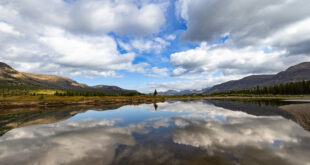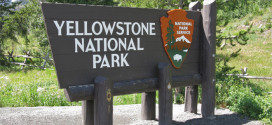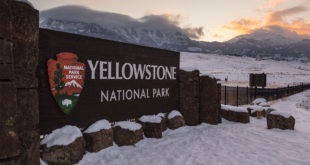Nearly 1,000 Yellowstone bison have been killed so far this winter.
A few weeks ago, we reported over 570 bison had been shipped to slaughter or taken by hunters as part of annual operations under the Interagency Bison Management Plan.
The announcement comes shortly after Montana Governor Steve Bullock halted the slaughter temporarily to negotiate the relocation of 40 bison from the pens at Stephens Creek to the Fort Peck Reservation, which is eager to start a bison quarantine program. In the end, only 24 Yellowstone bison will be sent to Fort Peck—after spending time in some USDA corrals outside Corwin Springs.
The IBMP, in place since 2000, mandates that Yellowstone’s bison population be held at 3,000—a goal that has never been reached since the plan’s enactment. At the start of operations this year, an estimated 5,500 Yellowstone bison roamed the Park. Officials hoped to cull 900 to 1,300 bison from the herd to curb population growth, a goal that is reportedly within sights, according to the Bozeman Daily Chronicle:
It was just another day at the park’s Stephens Creek Capture Facility, where bison are caught for slaughter each year. Park officials brought a group of bison advocates here Wednesday to watch. This season has been busier than the last, as harsh winter conditions have pushed more bison downhill from Mammoth Hot Springs than in recent years. The number of bison killed is approaching 1,000.
“And the winter’s not over,” said Rick Wallen, a Yellowstone bison biologist.
[…]
Both hunters and the slaughter operation have reaped the benefits of this year’s large migration. Andrea Jones, a spokeswoman for Montana Fish, Wildlife and Parks, said hunters from five tribal nations and some licensed through the state have confirmed the take of 417 bison this winter.
Wallen said roughly 650 bison have been caught for slaughter so far and about 400 have been shipped, an average of roughly 100 per week since the beginning of February. That means they are approaching the goal, and since more shipments are scheduled and capture for slaughter is scheduled to run through March, they may reach a point where the work can stop.
“We’re going to have to make some hard decisions,” Wallen said.
Shipping bison to slaughter has long been controversial, and some of the most outspoken critics of the practice watched it happen Wednesday. Once the trucks full of bison left, the spectators were back on the tour bus. They watched from inside the bus as a vintage Chevrolet Blazer and four rangers on horseback lined up behind a corral full of bison.
“They call this domestication before assassination,” said Mike Mease, of the Buffalo Field Campaign.
The Chronicle adds that Park officials are hoping to clear up some misconceptions about bison operations at Stephens Creek. Most notably, they’ve marked bison chutes with “2016-2017,” to more accurately date photos for archival purposes. Officials have expressed alarm at the use of old management photos showing bison clamped in nose tongs; Yellowstone spokeswoman Morgan Warthin says nose tongs haven’t been used at Stephens Creek in over a decade.
Since 2000, bison advocates and other groups have railed against operations at Stephens Creek; supporters of the IBMP say it’s imperative to keep Yellowstone bison in check out of fear that they would—eventually, somehow—spread brucellosis to cattle.
Although there have been no documented cases of bison transferring brucellosis to cattle—and a growing body of research points to elk as the primary transmitter of brucellosis to cattle in the Greater Yellowstone Area—the specter is enough to keep the livestock industry leery. Brucellosis, if transmitted, is passed primarily through the ingestion of afterbirth.
“A very small number of animals are truly threatening,” Wallen told the Chronicle.
Indeed, Wallen has gone on record saying he’d prefer to see bison managed more like elk i.e. with more freedom to roam. He was among several Yellowstone officials who called for changes at Stephens Creek as the season started gearing up last December.
Earlier this year, we reported Montana Representative Willis Curdy (D-Missoula) had introduced a bill to let bison with brucellosis be transported across the state. Shortly after its introduction, the House Agriculture Committee tabled the bill, citing concerns from the livestock industry.
 Yellowstone Insider Your Complete Guide to America's First National Park
Yellowstone Insider Your Complete Guide to America's First National Park





